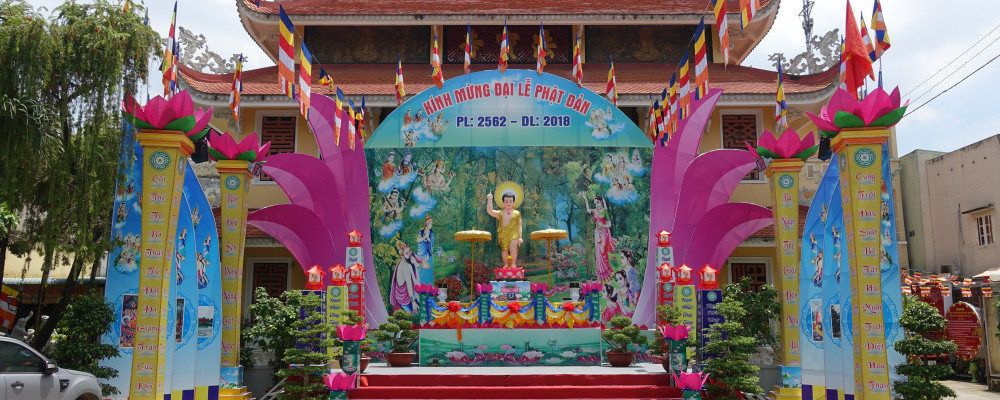Vietnam is a good place to visit.
Vietnam should be on everyone’s travel bucket list. Vietnam will electrify all of your senses and grab you from with its breathtaking scenery, interesting history, epic gastronomy, and pulsating energy. Vietnam is exhilarating and calming and frustrating at the same time.
Vietnam is a safe tourism destination and one of the few that offers breathtaking beauty as well as a rich and interesting history.
One of the main reasons to visit Vietnam is to see the natural beauty. Other key factors include the opportunity to meet local people and learn about their culture.
Places to see in Vietnam
Vietnam is a hidden jewel that only those who have visited the nation can truly appreciate. Halong Bay, Phong Nha Ke Bang caverns, Hoi An Ancient Street, and the Cham Islands are all World Heritage Sites in Vietnam.
However, it is the areas separate from the non-heritage site that will amaze you even more. Da Lat, for example, is simply too beautiful to pass up.
At times, the French-style villas adjacent to a pine forest and bordered by strawberry beds, make you feel like you’re in Europe.
You will not be disappointed, whether it is a must-see attraction or an off-the-beaten-path attraction.
Halong Bay
Halong Bay is a UNESCO World Heritage Site and a famous tourist attraction. Ha Long is a Chinese name that means “descending dragon.”
Halong Bay, near the Chinese border in northern Vietnam, is a stunning natural beauty. The Bay is around 1,500 square kilometers in size and is lined with 1,600 limestone islands and islets.
In 1994, UNESCO designated this exceptional area as a World Heritage Site. Halong Bay is home to a diverse range of wildlife, and the surreal beauty that thrills the senses as you sail around on an upscale “Junk Boat”
From Hanoi, which is only 170 kilometers away, the best method to get to Halong City is by car, minivan, or bus. An hour-long helicopter transfer is also available if money is not an issue.
Phong Nha Caves
Phong Nha is a national park and UNESCO World Heritage Site located on Vietnam’s North Central Coast, some 500 kilometers south of Hanoi. Phong Nha is known for its cave and grotto systems, which number in the hundreds.
It is thought to be the world’s largest cave system. Phong Nha already held several global cave records prior to its discovery, including the longest river and the largest combined caverns and corridors.
The caves of Phong Nha.
Hang Son Doong. Only in 2009 was the world’s largest cave discovered, and only in 2014 was it opened to tourism. This is a cave with enormous and amazing architecture that could fit a complete New York city block inside of it.
There is no other way to see Son Doong than on the official journey, so be wary of anyone who claims to be able to show you Son Doong.
Hang En Cave is one of the world’s largest and most magnificent caves, on the same cave system as “Hang Son Doong,”. This is as close as you can get to a “Son Doong” adventure without the costly price tag and significant commitment.
A day hike through gorgeous jungle and valleys, as well as a minority community, is required to see this gigantic cave. This is followed by an overnight stay camping at the cave’s entrance or on a beach inside the cave, and then a trip back the next day.
Hang Toi is a true adventure cave that is now extremely popular! The cave has no lighting, so after zip-lining across the river, you swim through it with your head torch to guide you, then explore a muddy side channel before kayaking back across the river.
You can either join the National Park trip or go on your own to explore this magnificent cave.
The alternative entrance to Dark Cave can be viewed on the Abandoned Valley Trek, which is located many kilometers away. Hang Toi is a fantastic and easily accessible example of the stunning caverns found throughout this region.
Phong Nha Cave was the first cave to be opened to the public, and it can be visited by boat from Phong Nha Village up the river.
During the American War, it was used as a shelter, storehouse, and a hospital, and many marks from that time can be seen on its walls.
It can easily be done in half a day and is definitely worth seeing. Particularly for the traditional Dragon Boat ride up the river and through the cave.
The “city” of Phong Nha
The “city” of “Phong Nha” is a small, uninspiring place with only 1,000 inhabitants. There isn’t much to do in the city itself, and travelers will find only a few pubs, cafes, other western “hang-out” areas.
However, this city and its caves are gradually becoming a must-see destination in Vietnam, as proven by blogging websites and tourism leaflets.
Hoi An
Hoi An is a living museum that preserves the old-town architecture and was formerly a prominent Southeast Asian commercial port in the 16th and 17th centuries. Chinese temples, a Japanese-designed bridge, pagodas, wooden shop houses, French-colonial houses, and old canals are just a few of the historic structures.
Despite the fact that large-scale trading had long migrated elsewhere, Hoi An was successful in conserving and restoring its picturesque roots, and in December 1999, it was designated as a UNESCO World Heritage Site.
The Hoi An Riverside resort is one I stayed at, and it was magical to wake up in the morning and see the farmers working in their fields, as well as the lanterns floating down the river next to the resort at night.
Five kilometers from the town center, Hoi An also features two wonderful beaches.
Hoi An is also recognized for its delicious food, enjoyable shopping, skillful tailors, friendly people, and welcoming ambiance, all of which bring visitors to this gorgeous town.
The Cham islands.
The Cham Islands are a group of eight granite islands located 15 kilometers off the magnificent coastline of “Hoi An.” The Cham people first landed on Hon Lao, the largest and principal island, some 3,000 years ago.
Historically, the eastern side of Hon Lao has been a good spot for ships to anchor. The army occupies half of the island and has previously restricted tourist access to the Cham Islands.
Tourists, on the other hand, may now enjoy the laid-back lifestyle and the activities available.
Getting there.
There are a variety of ways to travel to the island, so getting there is not a problem. Using a ferry, a speedboat, or a tour package.
The public ferry is substantially slower than the other modes of transportation. It is, however, far gentler on your wallet, and your stomach. It travels to the Cham Islands once a day and can be boarded at two locations: An Hoi Pier and Cua Dai Pier.
Visitors can go snorkeling, diving, and fishing in their turquoise waters, and there are plenty of powdery sand beaches to pick from. A handful of modest historical sites can be found on the Cham Islands.
They can be seen by taking a motorbike tour or by taking a leisurely stroll through the quiet pathways. Staying the night and watching the sunset behind the mainland is a great way to unwind if you’re looking for a taste of local life.
The Cities of Vietnam
Vietnam is a fast-developing country that is both adventurous and forward-thinking. Its cities are densely packed with culture, innovation, and colonial architecture, and they continue to push forward.
A potpourri of architectural styles and modern Asian architecture can be found in many of Vietnam’s cities. The top cities in Vietnam are waiting for you to discover their spectacular geographical natural panoramas, innovative cityscapes, and traditional cultures.
Saigon and Hanoi.
From the southern city of Ho Chi Minh City where evenings in the city are frantic and fun with packed bars and restaurants that come alive as travelers and locals mix and chat in the busy streets.
To the more sedate, and in my opinion more reserved, but equally congested Capital of Hanoi, there are many cities along the way to explore.
You can read more about the cities and my experiences in my post “What is it like living in Vietnam”
Dalat.
Da Lat is well-known for the great range of flowers, vegetables, and fruits are grown in the neighboring farmlands. Beautiful vistas, evergreen woods, and minority villages are among the many natural features. It is known as a romantic getaway for the Vietnamese.
Since French colonial times, the hill city of Da Lat has been a favorite destination for getaway holidays.
Many people refer to it as ‘Le Petit Paris,’ and it even has a miniature Eiffel Tower in the center.
This getaway city, located 1,500 meters above sea level, provides a change of scenery with a mild environment, whereas other cities in Vietnam can be extremely hot and humid, especially during the summer. Temperatures in Dalat stay around 10°C from November to March, so make sure you pack some heavier clothing.
The People and Culture.
Vietnam’s people are indeed a priceless resource. From north to south, you will be greeted warmly by the majority of the locals, whether or not you know them.
However you still need to be careful, petty crime is still big in the cities. So do not carry cameras or phones in your hand or over your back if on a Xe-Om (motorbike taxi)
From bartering with locals to dining out with locals there is always something that will frustrate and amuse you at the same time.
The food.
Vietnamese cuisine differs by region and goes beyond pho and spring rolls. Fresh vegetables and pork and poultry continue to reign supreme, while beef is gaining popularity.
You may also find plenty of fresh seafood caught in the morning along the shore in places like Nha Trang and Da Nang, and served in your supper for a very low price.
See my favorite bites in my post...Vietnamese Street Food.
Conclusion.
With the lifting of travel restrictions, Vietnam should be on your list of destinations to travel to. However, please check your local embassy before booking your trip.
Stephen is the author and owner of “VietnamESL” and has lived in Vietnam for over 15 years.





